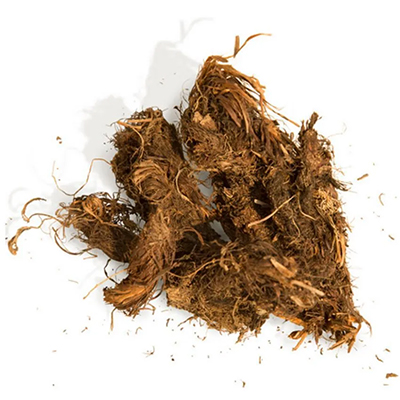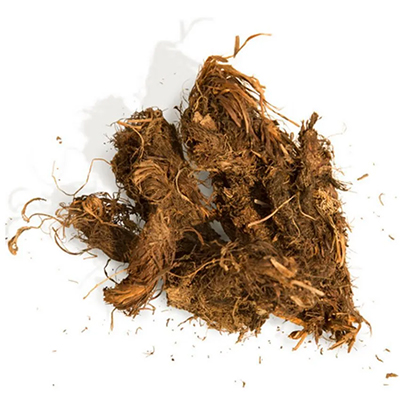On This Page
Summarise this article using AI
Jatamansi – The Endemic High-Altitude Indian Traditional Drug
Jatamansi botanically known as Nardostachys Jatamansi is found in the Himalayan region and is an important traditional drug of India. In Ayurvedic classical texts, it is used in various neurological disorders like convulsions, epilepsy, mental weakness, etc. Jatamansi is a perennial, hairy aromatic herb plant. Jatamansi is on the verge of extinction due to over-exploitation. Jatamansi consists of various active principles like jatamansone, nardostachone, etc due to which it exhibits various pharmacological activities like anti-fungal, anti-convulsant, anti-microbial, hypotensive, etc. Jatamansi is bitter and astringent in taste, acts as a brain tonic, gives luster to the body, and strengthens it. Promotes palatability and sensory interests, cold in potency, and alleviates diseases due to Tridoshas and blood, burning sensation, herpetic skin lesions, and other skin diseases.
Basonym of Jatamansi
जटायुक्त मांसी |
Jatamansi has matted hair.
Synonyms of Jatamansi
- According to Habitat
किरातिनी- किरातबहुले पार्वत्यप्रदेशे जाता |
Jatamansi grows in the mountains of Himalaya.
तपस्विनी- जटिलत्वात् पार्वत्यप्रदेशे स्थितत्वाच्च तपस्विनीव दृश्यते |
Jatamansi commonly found in high altitudes of Himalaya, it has matted hair like that of sage.
- According to morphology
जटिला- जटाधारिणी |
Jatamansi has matted hair.
भूतजटा- भूतघ्नी जटायुक्ता |
Jatamansi has fibers in rhizomes which appear like matted hairs.
कृष्णजटा- कृष्णवर्ण जटायुक्ता |
Rhizome of Jatamansi is black in color.
मिशि- कृष्णवर्णा |
Rhizome of Jatamansi is black in color.
सुलोमशा- शोभनै लोमभिर्युक्ता ।
Fibers on the rhizome are neatly arranged like matted hair.
- According to properties and action
मांसी- मांसं हिनस्तीति, लेखनत्वात् ।
Reduces fat because of Lekhana Karma (emaciating action).
प्लाङ्क्षा- पलं मांस कपषति हिनस्तीति |
Reduce Mamsa (fat stored in flesh)
नलदम – सुगन्धि: |
Rhizome of Jatamansi has an agreeable odor.
माता – मातेव निद्रापयति |
Induces good sleep.
Regional names of Jatamansi
- Indian spike nard, Indian Valerian (English)
- Jatamansi, Balchhad (Hindi)
- Jatamansi (Kannada)
- Jeta Manchi (Malayalam)
- Jetamavshi (Marathi)
- Jumulu (Punjabi)
- Jatamansi (Gujrati)
- Bhut Jata (Camarese)
- Jatamansi (Telegu)
- Jatamansi (Tamil)
- Sumbulutik, Sumbule Hindi (Arabic)
- Narad Hindi (Persian)
Botanical Name
Nardostachys jatamansi DC.
Nart means Valerius, stachy spiked.
Jatamansi is derived from the Sanskrit word Jatamansi.
Family
Valerianaceae (Jatamansi Kula)
Ayurveda reference for Jatamansi (Nardostachys jatamansi)
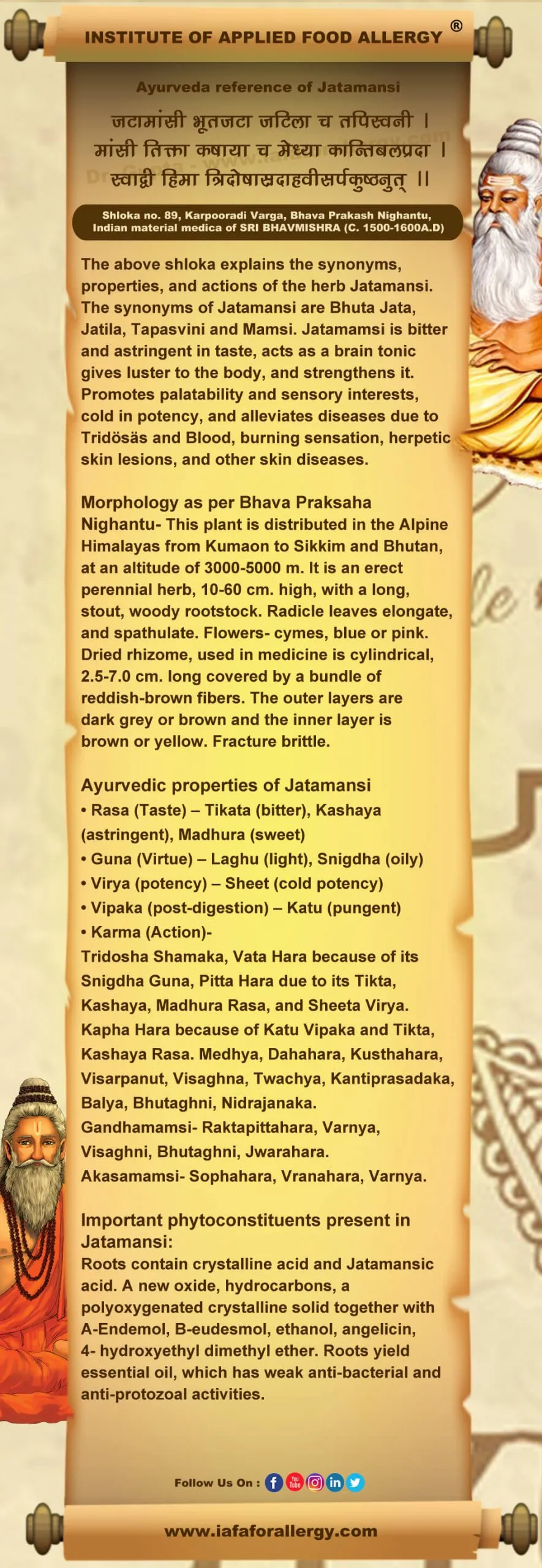
Scientific classification of Jatamansi
| Kingdom | Plantae |
| Class | Dicotyledons |
| Subclass | Gamopetalae |
| Series | Inferae |
| Order | Asterales |
| Family | Valerianaceae |
| Genus | Nardostachys |
| Species | jatamansi |
Classification of Jatamansi as per Charaka and Sushruta
- Charaka: Sangya Sthapana Mahakshaya, Kandu Ghana Maha Kashaya, Shukra Janana Mahakshaya.
- Sushruta: Eladi Gana, Anjanadi Gana.
Jatamansi’s description in Brihtrayi as Jata
Jata has been mentioned side by side with Marnsi, Bhutakesi, and Mura. According to Dalhana, it is another variety of Mansi known as Gandhamansi. It appears that Jata and Jatamansi identified as Nardostachys jatamansi DC. and known as Balachada, are synonyms, and the inferior variety of Mansi, Bhutakesi, and Mura are different.
Sushruta Samhita: S. S. Ka. 6/ 15 (both Jata and Mansi), S. S. Ka. 7/ 23, S. S. U. 60/ 47 (both Jata and Bhutkeshi), S. S. U. 62/ 30
Vagbhata: A. H. U. 5/ 2 (both Jata and Bhutkeshi), A. H. U. 6/ 38 (both Jata and Mura)
Jatamansi’s description in Brihtrayi as Jatila
It has been identified almost invariably with Jatamansi except in C. S. Su. 4. 19 where some consider it to be Ucchata as it has been mentioned in the Shukra Janana group of Charaka. Selaginella rupestris Spreng, which has been reported to be useful in epilepsy and female diseases and is possibly an aphrodisiac may also be examined.
Charaka Samhita: C. S. Su. 4/ 19, C. S. Sa. 8/ 93, C. S. Chi. 7/ 122, C. S. Chi. 9/ 51, C. S. Chi. 10/ 32
Sushruta Samhita: S. S. Su. 19/ 29, S. S. U. 36/ 6, S. S. U. 61/ 28
Vagbhata: A. H. Su. 29/ 31, A. H. U. 6/ 34
Jatamansi’s description in Brihtrayi as Mamsi
| Charaka | Shusruta | Vagbhata
(Ashtang Hridya) |
| C. S. Su. 5/ 18 | S. S. Su. 38/ 23 | A. H. Su. 15/ 14, 43 |
| C. S. Chi. 7/ 87 | S. S. Chi. 2/ 75 | A. H. Su. 22/ 20 |
| C. S. Chi. 12/ 64 | S. S. Chi. 3/ 58 | A. H. Chi. 3/ 68 |
| C. S. Chi. 14/ 232 | S. S. Chi. 15/ 31 | A. H. Chi. 4/ 11 |
| C. S. Chi. 17/ 78 | S. S. Chi. 22/ 69 | A. H. Chi. 8/ 131 |
| C. S. Chi. 18/ 69 | S. S. Ka. 2/ 51 | A. H. Chi. 17/ 23 |
| C. S. Chi. 20/ 33 | S. S. Ka. 5/ 68 | A. H. Chi. 21/ 78 |
| C. S. Chi. 23/ 54, 102, 190 | S. S. Ka. 6/ 61 | A. H. Chi. 22/ 42 |
| C. S. Chi. 26/ 65/ 208, 232 | S. S. Sa. 10/ 45 | A. H. U. 5/ 18 |
| C. S. Chi. 28/ 152, 157 | S. S. U. 18/ 98 | A. H. U. 13/ 23 |
| C. S. Chi. 29/ 93, 112, 131 | S. S. U. 52/ 21 | A. H. U. 16/ 4 |
| C. S. Ka. 1/ 26 | A. H. U. 22/ 92 | |
| A. H. U. 24/ 41 | ||
| A. H. U. 26/ 55 | ||
| A. H. U. 35/ 25, 39 |
Jatamansi’s description in Brihtrayi as Mansyahvaya
Sushruta Samhita: S. S. Chi. 2/ 39
Jatamansi’s description in Brihtrayi as Lomsha
If there is Romosa or Lomasa in the version the mineral Kasisa (green sulfate of iron) is supposed to be intended and if it is replaced by Lomasa or Romasa, Jatamarsi is proposed to be its meaning.
Charaka Samhita: C. S. Su. 3/ 3, 14, C. S. Chi. 29/ 151
Vagbhata: A. H. Chi. 22/ 16
Jatamansi’s description in Brihtrayi as Bhutkeshi
Many alpine herbs after being buried under snow die down and decay leaving only their roots usually covered by a mat of hair-like fibers which are vascular remnants of their leaves. Several of them such as species of Nardostachys, Selenium, Corydalis, etc. have a similar appearance and are likely to be called by the names of Bhntakesi, Putanakesi, and Jatila. Dalhapa has identified Bhutakest and Jatila with Mansi, which too exists in more than one variety known as Mansi, Gandhamansi, and Mura.
Sushruta Samhita: S. S. U. 60/ 47
Vagbhata: A. H. Su. 15/ 30, A. H. 5/ 2
Historical background of Jatamansi
In Atharva Parisista (35/ 1/ 14 & 35/ 2/ 1- 7) Mamsi is denoted as Soubhagyajanana and Vasikarana. Sounaka quoted it as Soumanasyajanana (Sou. Atharva. 6/ 102/ 3). Sayana considered Nalada as Ushira probably, he might have intended to identify it with Naledi. In Charaka Samhita Mamsi term is used while the Jata term is used by Shusruta and Vagbhata. It is important to note that the Jatamansi term was not used in Brhattrayi texts. It appears that Bhavamisra introduced the synonym Jatamansi. Jatamansi is traditionally known for its role in insomnia, mental disorders, and infectious conditions. Caraka indicated it for visa rogas, Asmari, Apasmara, Unamada, Vatarakta, Shwasa, Kasa, etc., along with various other drugs. Susruta advocated that it should be worn on the head in the Vrana management.
Controversial Studies regarding Jatamansi
Thakurji thinks that Jatila mentioned in the context of Sukrajanana and Sanjanasthapana may be Ucchata. Selaginella rupestris Spreng, which has been reported to be useful in epilepsy and gynecological disorders, is the botanical source. It may also be an aphrodisiac. Though the Nighantu writers described Bhutakesi, Putanakesi, and Jatila as separate plants, Dalhana considered Bhutakesi, Putanakesi, and Jatila as separate plants, Dalhana considered Bhutakesi and Jatila as Mamsi.
Different varieties of Jatamansi
In two to three contexts Susruta and Vagbhata described two varieties of Mamsi (S. S. Ka. 6/15, S. S. Ka. 7/ 23, S. S. U. 60/ 47, S. S. U. 62/ 30, A. H. U. 5/ 2 & 6/ 38) viz; Jatamansi and Gandhamamsi (Jata and Bhutakeshi) Bhutakeshi or Gandhamamsi is identified with Selinum tenuifolium Wall. In Raja Nighantu’s third variety known as Akasa, mamsi is described. In Nighantu Ratnakaram three varieties viz., Sadharana Mamsi, Sugandha mamsi & Akasamamsi (Suksma mamsi) are described.
External morphology of Jatamansi (Nardostachys jatamansi DC.)
- Habit- Jatamansi is an erect perennial herb that grows 10 to 60 cm high with long, stout, and woody rootstock covered with fibers from the petioles of withered leaves.
- Stem- Stem of the radical leaves measuring 15- 20 x 2.5 cm, longitudinally nerved, glabrous, or slightly pubescent, narrowed into the petiole. Cauline leaves are one or two pairs, 2.5 to 7.5 cm long, sessile, oblong, or subovate.
- Inflorescence- Usually 1, 3, and 5 flowered, dense cymes.
- Flower- Rosy, pale pink or blue colored, pubescent.
- Fruit- 4 mm long, indehiscent, covered with ascending minute transparent hairs, crowned by the ovate, acute, after dentate calyx teeth.
Flowering and fruiting time
Rainy to the autumn season.
Distribution of Jatamansi
It is found in the alpine region of the Himalayas at 11000- 15000 feet extending between Kumaun to Sikkim at 17000 feet and Bhutan.
The useful part of Jatamansi
Rhizome
Rhizomes will be stout, woody, frequently arched, 2.5 to 8 cm long, and up to 1 cm thick, and have dark gray color. The rhizome is densely covered with silky reddish-brown fires, which are matted to form a network. A transversely cut portion shows a reddish-brown surface and a prominent cambium ring surrounding a porous wood. On breaking, the rhizome becomes a short piece and exposes a reddish-brown uneven surface. Rhizome will have a very strong odor and bitter taste.
Important phytoconstituent of Jatamansi
Roots contain crystalline acid and Jatamansic acid. A new oxide, hydrocarbons, a polyoxygenated crystalline solid together with A-Endemol, B-eudesmol, ethanol, angelicin, and 4-hydroxyethyl dimethyl ether. Roots yield essential oil, which has weak antibacterial and antiprotozoal activities.
Recent research on Nardostachys jatamansi DC.
- The study investigated the potential of N. Jatamansi extract (NE) in protecting against chronic stress-induced impairments in spatial learning and memory. The study has shown significant results in improving memory. Karkada G, Shenoy KB, Halahalli H, Karanth KS Nardostachys jatamansi extract prevents chronic restraint stress-induced learning and memory deficits in a radial arm maze task. J. Nat. Sci Biol Med, 2012 Jul; 3 (2): 125- 32. doi: 10. 4103/ 0976- 9668. 1011879.
- This study aimed to examine the inhibitory effects of NJ on ACP. C57 black 6 mice received ethanol injections intraperitoneally for 3 weeks against a background of cerulean-induced acute pancreatitis. In conclusion, the results suggest that NJ attenuated ACP through the inhibition of PSC activation. Bae GS, Park KC, Koo BS, Choi SB, Jo Ij, Choi CM, Song HJ, Park SJ. The inhibitory effects of Nardostachys jatamansi on alcoholic chronic pancreatitis. BMB Rep. 2012 Jul; 45 (7): 402- 7.
- In the present study, the anti-stress effect of hydroethanolic extract (70%) of N. jatamansi (NJE) was evaluated for its antioxidant property. The findings suggest that the NJE possesses significant anti-stress activity, which may be due to its antioxidant activity. Lyle N, Bhattacharyya D, Sur TK, Munshi S, Paul S, Chatterjee S, Gomes A. Stress modulating antioxidant effect of Nardostachys jatamansi. Indian J. Biochemistry Biophysics 2009 Feb; 46 (1): 93- 8.
- The present study was undertaken to assess the potential of N. Jatamansi as a memory enhancer. The 200 mg/ kg dose of N. Jatamansi ethanolic extract significantly improved learning and memory in young mice and also reversed the amnesia induced by diazepam (1 mg/kg, i.p.) and scopolamine (0.4 mg/kg, i,p.) Joshi H, Parle M. Nardostachys jatamansi improves learning and memory in mice. J. Med Food. 2006 Spring; 9 (1): 113- 8.
- Ethanol extract of the roots of Nardostachys jatamansi DC. (Valerianaceae) was studied for its anticonvulsant activity and neurotoxicity, alone and in combination with phenytoin in rats. The results demonstrated a significant increase in the seizure threshold by Nardostachys jatamansi root extract against the maximal electroshock seizure (MES) model as indicated by a decrease in the extension/flexion (E/F) ratio. Rao VS, Rao A, Karanth KS. Anticonvulsant and neurotoxicity profile of Nardostachys jatamansi in rats. J Ethnopharmacol. 2005. Dec 1;102 (3): 351- 6. Epub 2005 Aug 10. The essential oil from the rhizomes had a depressant action on the CNS of guinea pigs rats (Chopra et al., 1954).
- Jatamansone was found to be more effective than diphenylhydantoin sodium and essential oil in maximal electroshock seizures. The LD, of jatamansone and essential oil of jatamansi by the i.p. the route in mice was 350 mg/ kg and 900/ 1mg/ 4g respectively (Arora et al., 19582).
- The oil-free aq. extract showed a transient hypotensive effect and ECG changes in the dog’s heart, apart from contracting the frog’s rectus muscle. The CVS effect of the extract was similar to that of potassium (Sheth & Kekre, 1956).
- The antiarrhythmic activity of volatile oil was reported against acetylcholine-induced fibrillations in mongrel dogs (Arora& Madan, 1955)
- The alkaloid fraction showed a significant and sustained hypotensive action in dogs. The fraction also produced a marked relaxation of plain muscles and depression of CNS and a mild degree of relaxation of the skeletal muscle (Bose et al., 1957b).
- The essential oil showed prolonged and pronounced hypotensive effects in dogs. The oil had the heart of a frog and a dog (Arora et al., 19582).
- The effect of jatamansone was equal to that of quinidine in combating auricular flutter and auriculas fibrillation (Arora et al., 1958b).
- Various extracts of root showed sedative action in rats as revealed by physical inactivation and potentiation of phenobarbital sodium sleeping time in rats, and the hypotensive activity in cats (Hamied et al., 1962).
- The antibacterial activity of alcoholic and ethanolic extracts was reported against Staph aureus and E. coli (George & Pandalai, 1949).
- 5% ethanolic extract showed antifungal activity against Cand. albicans, Aspergillus niger etc. (Bhakuni et al., 1969).
- The essential oil showed anthelmintic activity (Girgune et al, 1978c).
- Root powder (60g) showed a sedative action in a clinical study on 24 medical students as evidenced by the prolongation of the visual reaction time (Amin et al., 1961).
Rasa Panchaka of Jatamansi
| Rasa (Taste) | Tikta (bitter), Kashaya (astringent), Madhura (sweet) |
| Guna (Virtue) | Laghu (light), Snigdha (oily) |
| Virya (potency) | Sheet (cold potency) |
| Vipaka (post-digestion) | Katu (pungent) |
Dosha Karma of Jatamansi
Tridosha Shamaka, Vata Hara because of its Snigdha Guna, Pitta Hara due to its Tikta, Kashaya, Madhura Rasa, and Sheeta Virya. Kapha Hara because of Katu Vipaka and Tikta, Kashaya Rasa.
Karma (Actions) of Jatamansi
Medhya, Dahahara, Kusthahara, Visarpanut, Visaghna, Twachya, Kantiprasadaka, Balya, Bhutaghni, Nidrajanaka. Gandhamamsi- Raktapittahara, Varnya, Visaghni, Bhutaghni, Jwarahara. Akasamamsi- Sophahara, Vranahara, Varnya.
Prayogarha Vyadhi (Therapeutic indication) of Jatamansi
Manasa vikara, Kustha, Daha, Twak vikara, Visavikara, Visarpa and Nidrasana.
- Gandhamamsi- Vaivarnya, Raktapitta, Jwara and Visavikara.
- Akasamamsi- Vaivarnya, Sopha and Vrana.
Aamyik Paryog (Therapeutic uses) of Jatamansi
Unmada (Insanity): Mamsi is one of the ingredients of Maha Paisacika Ghrita. (Charaka Samhita Chikitsa Sthana. 9. 45- 48)
Apsmara (Epilepsy): It is one of the ingredients of Abhyanjana Taila (Charaka Samhita Chikitsa Sthana. 10. 34- 36) and Kulatthadi Ghrita. (Sushruta Samhita Uttara Tantra. 61. 28) useful in the disease.
Kustha (skin disorder)
- Mansi, Marica, salt, Haridra, Tagara, Snuhi root, urine, bile, and alkali of Palasa-paste of these destroy Kustha. (Charaka Samhita chikitsa Sthana. 7. 87)
- Putika, Devadaru, Mansi, Indravaruni, Guduci, Mudgapari, and Kakanasa- paste of these is a tried remedy for Mandala Kustha. (Charaka Samhita Chikitsa Sthana. 7. 123)
Sotha (Oedema): It is used for external application along with other drugs. (Charaka Samhita Chikitsa Sthana. 12. 65)
Arsha (Piles): Mamsi comes as one of the ingredients in Hriberadi Ghrita (Charaka Samhita Chikitsa Sthana. 14. 230- 33) and Changeri- Ghrita. (Ashtanga Hridya Chikitsa Sthana. 8. 131- 33)
Hikka & Swasa (Hiccough and asthma): In preparation for smoking (Dhumpana) Jatamansi is used. (Charaka Samhita Chikitsa Sthana. 17. 78)
Kasa (Cough): One should smoke with realgar, orpiment, Madhuka, Jatamansi, Musta and Inguda followed by an intake of warm milk added with jaggery. (Charaka Samhita Chikitsa Sthana. 18/ 69, Sushruta Samhita Uttara Tantra. 52/ 22)
Chardi (Vomiting): Paste of Chandana, Chavya, Jatamansi, Draksha, Balaka, and Gairika should be taken with cold water. Similarly, the powder of Gairika and Shali, and Murva with rice water is taken. (Charaka Samhita Chikitsa Sthana. 20/ 33)
Ashmari (Calculus): Mansi is one of the ingredients in the Trutyadi formulation efficacious in the disease. (Charaka Samhita Chikitsa Sthana. 26/ 65)
Vatavyadhi (Vataja disorder): It comes as one of the ingredients in Bala Taila and Amrtadya Taila. (Charaka Samhita Chikitsa Sthana. 28/ 153,158)
Vatarakta (Gout)
- In the condition of redness, pain, and burning sensation, after venesection, a paste of Madhuka, Vattha bark, Mansi, Vira, Udumbara, and Durva should be applied. (Charaka Samhita Chikitsa Sthana. 29. 131)
- It also comes, as an ingredient, in Madhuparmyadi Taila and Mahapadmaka Taila. (Charaka Samhita Chikitsa Sthana. 29. 92, 112)
Vrana (Accidental wound): Oil cooked with Talisa, Padmaka, Mansi, Harenu, Aguru, Chandana, Haridra, Daruharidra, Padma seeds, and Madhuka is a good healing agent for accidental wounds. (Sushruta Samhita Chikitsa Sthana. 2/ 75- 76)
Bhagna (Fracture): Mansi is one of the ingredients of Gandha Taila useful in the disorder. (Sushruta Samhita Chikitsa Sthana. 3. 55- 66)
Mukha Roga (Diseases of mouth): It comes as one of the ingredients in Khadiradi Gutika & Taila (Charaka Samhita Chikitsa Sthana. 26. 206- 14) and Snaihika Dhuma (unctuous smoking) prescribed in disorders of the mouth. (Sushruta Samhita .28. 69)
Netra Roga (Diseases of the eye):
- In Paittika eye diseases, paste on the lids should be applied on Chandana, Sariva, and Manjistha or Padmaka, Madhuka, Mansi, and Kaliyaka. (Charaka Samhita Chikitsa Sthana. 26. 234)
- Mansi is also one of the ingredients of Vakradyanjana (Sushruta Samhita Uttara Tantra. 18. 98- 99) and Mannsyadyanjana (Ashtanga Hridya Uttara Tantra. 13. 23-24).
Vishakta (Poisoning): Mansi, Kunkuma, Patra, Tvak, Rajani, Tagara, Chandana, real agar, Vyaghranakha, and Tulsi. These are pounded with water and used as intake, snuff, collyrium, and paste. It destroys all types of swelling and poison. (Charaka Samhita Chikitsa Sthana. 23. 190- 91)
Mansi comes in the context of poisons, as one of the ingredients of the following formulations-
- Mitasanjivana Agada (Charaka Samhita Chikitsa Sthana. 23. 54)
- Kharagda (Charaka Samhita Chikitsa Sthana. 23. 102)
- Dusivigari Agada (Sushruta Samhita. 2. 51- 52)
- Risabhagada (Sushruta Samhita Kalpa Sthana. 5. 68- 72)
- Mahasugandhi Agada (Sushruta Sthana Kalpa Sthana. 6. 14-27)
Bala Rasayana (As pediatric Rasayana): In children fed on milk only, ghee cooked with Siddhartha, Vaca, Mansi, Payasa, Apamarga, Shatavari, Sariva, Brahmi, Pippali, Haridra, Kustha and Saindhava should be used. It promotes health, strength, intellect, and life. (Sushruta Samhita Sharira Sthana. 10/ 45)
Dhupana (For fumigation): Mamsi is used for fumigation for warding off Bhutas. (Ashtanga Haridya Uttara Tantra. 18)
Kesha Vardhana (For promoting the growth of hairs): Mansi, Kustha, black sesamum, Sariva, and Nilotpala pounded with milk and mixed with honey should be applied locally. It is an excellent agent for promoting the growth of hair. (Ashtanga Hridya Uttara Tantra. 24, 41)
Benefits of Jatamansi
- It is an antiseptic, appetizer, aromatic, carminative, diuretic, emmenagogue, expectorant, nervine, tonic, sedative to the spinal cord, stimulant, tonic, tranquilizer, and vermifuge. It is useful in high blood pressure, cold and cough, colic, diabetes insipidus, diarrhea, digestive and respiratory disorders, distribution of the flow of blood, dysmenorrhea, epilepsy, erysipelas, Flatulence, headache, nervousness, hysterical convulsions, leprosy, nervous excitement, palpitation of heart and ailing or abnormalities of the hairs.
- It is a good promotive, protective and restorative herbal material much used as a hair tonic in preparation of hair oils which are of both preventive and curative utility and considered quite useful for hair, and health, based on ethnobotanical as well as classical sources, since in the local hilly areas (where it naturally grows) the herb is frequently employed to prepare hair oil, and it is utilized in pharmaceutics and cosmetics in formulating hair oils, hair washes as well as skin health.
- As a cosmetic herbal drug, it is used to promote and protect skin health to make it lustrous and full of complexion; the paste, oil, and other, suitable formulations used as skin cosmetics, this herb are employed.
- The rhizome of the herb is an esteemed, efficacious, and potent drug in mental derangement, loss of memory, headache, hysteria, nervous and convulsive disorders, certain disturbances caused or related to Menopause, psychological problems, excitement, psychic and imbalance, (milder forms of delirium). It is quite effective and palliative, to help maintain Tranquility of the mind and mental normalcy.
- This herbal drug is employed in various herbal formulations used in medical practice for the treatment of mental and nervous disorders (including the Cardiovascular system). It is used in cholera, dysmenorrhea, flatulence, jaundice, palpitation of the heart, bronchitis, disorders of the digestive system, worms, constipation, worms affections (especially threadworms), chronic headache, insomnia, impotency, general debility, nervine complaints, liver disorders, poisoning, calculous and insanity.
Benefits of Jatamansi on different systems of bodies
- External Uses: Paste is used in the burning of the skin. It improves the complexion and is antipyretic. The paste is also used for inflammation and pain. The paste is effective in many skin disorders. Its fine powder is used for excessive sweating and reducing the foul smell of sweat. Jatamansi acts on the digestive, circulatory, urinary, nervous, skin, and also reproductive systems i.e., on all systems of the body.
- Nervous system: Jatamansi mainly acts on this system. It is a brain and health tonic. Jatamansi is best used in Apsmara (epilepsy), convulsions and pain, syncope, etc. so it is called Bhutaghna or Rakshoghna. In these disorders, Mula and Pushpa (the bulbous root, flowers) are also used. As a brain tonic, it is used for loss of memory. For headaches, Jatamansi is one of the best medicines and is also a sedative.
- Digestive system: It is an appetizer, digestive, laxative, and cholagogue, useful in pregnancy. It is an analgesic and laxative and has Vata Prashaman Karma. Because of this Karmas, Jatamansi is used in Aruchi (loss of appetite), Shool (abdominal pain), and amebiasis. Also, useful in Yakrita Vriddhi (liver enlargement) and Kamala (jaundice) by cholagogue action.
- Circulatory system: Jatamansi is an excellent cardiac depressant and hypotensive drug. Jatamansi is the best medicine for Sarva Shaarera Shotha (anasarca) and Uccha Rakta Chapa (hypertension).
- Respiratory system: Effective in cough and dyspnea by bitterness.
- Urinary system: It stimulates the kidneys and increases micturition, so effective in dysuria and cystitis.
- Reproductive system: It is useful in infertility, dysmenorrhea, and uterine inflammation.
- Skin: Effective in various skin disorders and erysipelas; the oil is used in alopecia. Jatamansi Taila (oil) is famous in Dakshina Bharata (South India).
- Satmikaran: Jtaamansi is a tonic, so useful in Dourbalya (weakness).
- Temperature: Bitter, antipyretic, relieves burning, effective in Sannipat Jwar (fever with delirium) reduces fever, gives strength, and relieves burning.
Matra (Therapeutic administration and dosage) of Jatamansi
- Churna (powder): 3- 6 grams
- Taila (oil): as per requirement.

Have A Health Issue?
Consult Online
- Dr. Sahil Gupta (B.A.M.S., M.H.A.)
Ayurvedic Allergy Specialist
CEO & Founder of IAFA®
Classical reference of Jatamansi
Bhava Prakasha Nighantu Karpooradi Varga- 89
Synonyms
जटामांसी भूतजटा जटिला च तपिस्वनी |
Bhava Prakasha Nighantu Karpooradi Varga- 89
Properties and actions
मांसी तिक्ता कषाया च मेध्या कान्तिबलप्रदा |
स्वाद्वी हिमा त्रिदोषास्रदाहवीसर्पकुष्ठनुत् ||
Dhanwantri Nighantu Chandanadi Varga- 44
Properties and action
मांसी स्वादु कषाया स्यात्कफपित्तास्र नाशिनी |
विषमारुत हदबल्या त्वच्या कान्तिप्रसादनी ||
Kaiydeva Nighantu Aushadi Varga, 1364- 1365
मांसी स्वादु हिमा तिक्ता तुवरा बलंकान्तिंदा |
त्रिदोष विष विसर्प, दाहलोहित कुष्ठनुत ||
Raja Nighantu Chandandi Varga, 95
जटामांसी- सुरभिस्तु जटामांसी काया कटु शीतला |
कफहद् भूतदाहघनी पित्तघ्नी मोदकान्तिकृत् ||
Raja Nighantu Chandandi Varga, 97
गन्धमांसी- गन्धमांसी तिक्त शीता कफकण्ठामयापहा |
रक्त पित्त हरा वर्ण्या विषभूतज्वरापहा ||
Raja Nighantu Chandandi Varga, 99
आकाशमांसी- अभ्रमांसी हिमा शोफ व्रण नाडीरूजापहा ।
लूतागर्दभजालादि हारिणी वर्णकारिणी ||
Priya Nighnatu Shatpuspadi Varga, 37
मांसी मेध्या तु तिक्ता स्यादनुष्ण वर्णकारिणी |
रक्तवातहरी निद्राजननी कुष्ठहारिणी ||
Nighnatu Sangreha
जटामांसी तु तुवरा शीतला कान्तिकारका |
बल्या कट्वी स्वादुतिक्ता कफान्तर्दाहपित्तहा ||
विसर्पकुष्टत्वग्दोषभूतबाधाज्वरापहा |
दाहं त्रिदोष॑ वात॑ च रक्तदोष॑ विष॑ हरेत् ||
Chakra Dutta, Kustha Chikitsa, 50- 49
मांस्यादि कण्डूहर योग:
Sushruta Samhita Sharira Sthana, 10/ 45
कुमाररसायने
क्षीराहारासभ……मांसी…..शिर्शो भवन्ति |
Charaka Samhita Chikitsa Sthana, 17- 78
हिक्काश्वासयो:
धूमवर्त्ती
Charaka Samhita Chikitsa Sthana, 7/ 87
कुष्ठ
मांसी…..कुष्टहरलेप: ||
Charaka Samhita Chikitsa Sthana, 14/ 230- 231
अर्श
हीवेरादिघृते ।
Ashtanga Hridya Chikitsa Sthana, 8/ 131- 133
चंगेरी घृत
Charaka Samhita Chikitsa Sthana, 12/ 65
वातिकशोथे
बहि:परिमार्जने |
Charaka Samhita Chikitsa Sthana, 18/ 61, Sushruta Samhita Uttara Tantra, 52/ 22
कासे
…. मांसी….पिबेत् ।
धूमं तस्यानु च क्षीरं सुखोष्ण॑ सगुडं पिबेत ||
Charaka Samhita, 9/ 45- 48
उन्माद
महापैशाचिक घृतम्।
Charaka Samhita, 10/ 34- 36
अपस्मारे
अभ्यञ्जन तैलं |
Sushruta Samhita, Uttara Tantra, 18/ 98- 99
नेत्ररोगे
वक्रदया अन्ज्जन
Ashtanga Hridya, Uttara Tantra, 13- 23/ 24
मांस्या अन्ज्जन
Sushruta Samhita, Uttara Tantra, 61/ 28
कुलत्थादि घृतम्
Sushruta Samhita, Chikitsa Sthana, 3/ 55, 66
….. गन्धतैले।
Ashtanga Hridya, Uttara Tantra, 5/ 18
भूतप्रतिषेधे
भूतघ्न धूपे |
Charaka Samhita, 26- 206, 214
मुखरोगे
……………खदिरादिगुटिका तैलञ्च |
Sushruta Samhita, Chikitsa Sthana, 22/ 69
स्नेहिक धूम |
Sushruta Samhita, Kalpa Sthana, 6/ 14, 27
विषे …
महा सुगंध अगद
Charaka Samhita Chikitsa Sthana, 23/ 54
मृत संज्जीवन अगद
Sushruta Samhita, Kalpa Sthana, 5/ 68, 72
ऋषभ अगद
Charaka Samhita Chikitsa Sthana, 23/ 102
क्षार अगद
Sushruta Samhita, Kalpa Sthana, 2/ 51, 52
दूषि विष अगद
Charaka Samhita Chikitsa Sthana, 26/ 92
वात रक्त
मधु पर्ण आदि तैल
Charaka Samhita Chikitsa Sthana, 29/ 112
महापद्मतैले।
Charaka Samhita Chikitsa Sthana, 28/ 153, 158
वातव्याधी
बला तैले।
अमृताद्य तैले।
Charaka Samhita Chikitsa Sthana, 26/ 65
अश्मरी
त्रुट्यादि योगे।
Ashtanga Hridya Uttara Tantra, 24/ 46
केशवर्धनार्थम्
मांसी…..नीलमुत्पलम्।
क्षौद्रञ्च क्षीरपिष्टानि केशसंवर्धनं परम् ||
Specific Formulation of Jatamansi
- Jatamansya Arka for Apsmara and Unmada
- Mamsyadi Kwath for Kandu, Pama
- Mamsyadi lepa for Kustha
- Saraswat Churna for Netra Roga
- Maha Paishachika Ghrita for Unmada and Apsmara
- Bhuta Ghana Dhupa
- Rakshoghna Ghrita
Contraindication and side effects of Jatamansi
A higher dosage of Jatamansi causes hyperemesis, dysentery inflammation of the kidney, breathing difficulty, nausea, griping pain, etc. Avoid the use of Jatamansi during pregnancy and lactation as no scientific evidence is available regarding its use in them.
Suggestive reading regarding Nardostaycgys jatamansi
- Thakur, Shifali & Kaurav, Hemlata & Chaudhary, Gitika. (2021). NARDOSTACHYS JATAMANSI: IMPORTANCE OF HIGHLY SIGNIFICANT AND ENDANGERED PLANT IN AYURVEDA. International Journal of Research in Ayurveda and Pharmacy. 12. 124- 130. 10. 7897/ 2277- 4343. 120387.
- Karkada G, Shenoy KB, Halahalli H, Karanth KS. Nardostachys jatamansi extract prevents chronic restraint stress-induced learning and memory deficits in a radial arm maze task. J Nat Sci Biol Med. 2012 Jul; 3 (2): 125- 32. doi: 10. 4103/ 0976- 9668. 101879. PMID: 23225973; PMCID: PMC 3510905.
- Ahmad, Ashfaq & Zubaid, Munavvar & Rathore, Hassaan & Fatima, T. & Khan, S.A. & Afzal, Sheryar & Lazhari, Mohamed & Ahmed, F.U. & Eseyin, Olorunfemi. (2013). Pharmacological importance of Nardostachys jatamansi DC: A potential therapeutic agent in different pathological ailments. Journal of Chemical and Pharmaceutical Research. 5. 431- 438.
- Pandey MM, Katara A, Pandey G, Rastogi S, Rawat AK. An important Indian traditional drug of Ayurveda jatamansi and its substitute bhootkeshi: chemical profiling and antioxidant activity. Evid Based Complement Alternat Med. 2013; 2013: 142517. doi: 10. 1155/ 2013/ 142517. Epub 2013 Mar 21. PMID: 23573115; PMCID: PMC3618914.
- Madhu LN, Kumari NS, Naveen P, Sanjeev G. Protective Effect of Nardostachys jatamansi Against Radiation-induced Damage at Biochemical and Chromosomal Levels in Swiss Albino Mice. Indian J Pharm Sci. 2012 Sep;74(5):460-5. doi: 10.4103/0250-474X.108425. PMID: 23716877; PMCID: PMC3660875.
- Gottumukkala VR, Annamalai T, Mukhopadhyay T. Phytochemical investigation and hair growth studies on the rhizomes of Nardostachys jatamansi DC. Pharmacogn Mag. 2011 Apr;7(26):146-50. doi: 10.4103/0973-1296.80674. PMID: 21716625; PMCID: PMC3113354.
- Jha, Sweta & Bhagwat, Ashok & Pandita, Nancy. (2012). Pharmacognostic and Phytochemical studies on the rhizome of Nardostachys jatamansi DC. using different extracts. Pharmacognosy Journal. 4. 16– 22. 10. 5530/ PJ. 2012. 33. 3.
- Sharma, Gaurav & Sharma, Sarita & Chasta, Pankaj & Joshi, Rishi & Tiwari, Atul & Chandrul, Kaushal & Gaurav, Kumar & Sharma,.(2020). assessment-of-pharmacognostic-parameters–antioxidant-potential-of-jatamansi-nardostachys-jatamansi-d-don-dc-roots–this. Der Pharmacia Lettre. 2020. 43- 50.
- Sahu, Renu & Dhongade, Hemant & Pandey, Ajit & Sahu, Poonam & Sahu, Varsha & Patel, Dipali & Kashyap, Pranita. (2016). Medicinal Properties of Nardostachys jatamansi (A Review). Oriental Journal of Chemistry. 32. 859-866. 10. 13005/ ojc/ 320211.
- Gowda DK, Shetty L, A P K, Kumari SN, Sanjeev G, P N. The efficacy of nardostachys jatamansi against the radiation-induced hematological damage in rats. J Clin Diagn Res. 2013 Jun; 7 (6): 982- 6. doi: 10. 7860/ JCDR/ 2013/ 5475. 3078. Epub 2013 Apr 26. PMID: 23905085; PMCID: PMC3708255.
- Lyle N, Bhattacharyya D, Sur TK, Munshi S, Paul S, Chatterjee S, Gomes A. Stress modulating antioxidant effect of Nardostachys jatamansi. Indian J Biochem Biophys. 2009 Feb; 46 (1): 93- 8. PMID: 19374260.
- Singh, Ajay & Sharma, Sk. (2011). Standardization and preliminary phytochemical screening of Nardostachys jatamansi DC. rhizome. International Journal of Research in Ayurveda and Pharmacy. 2. 978- 82.
- Monga, A.K. & Kumar, S. (2013). A phytopharmacological review on N. Jatamansi. Pharma Research. 9. 21- 32.
- Naik, Hari & Jadhav, Vijay. (2020). An overview of the therapeutic application of Jatamansi. National Journal of Research in Ayurved Science. 8. 10. 52482/ ayurlog. v8i03. 683.
- Kim KW, Yoon CS, Park SJ, Bae GS, Kim DG, Kim YC, Oh H. Chemical Analysis of the Ingredients of 20% Aqueous Ethanol Extract of Nardostachys jatamansi through Phytochemical Study and Evaluation of Anti-Neuroinflammatory Component. Evid Based Complement Alternat Med. 2021 Apr 22; 2021: 5901653. doi: 10. 1155/ 2021/ 5901653. PMID: 33976703; PMCID: PMC8084687.
- Singh M, Khan MA, Khan MS, Ansari SH, Ahmad S. Standardization and in vitro antioxidant activity of jatamansi rhizome. J Pharm Bioallied Sci. 2015 Oct-Dec; 7 (4): 275- 9. doi: 10. 4103/ 0975- 7406. 168025. PMID: 26681882; PMCID: PMC 4678979.
- Ko, Wonmin, Jin-Soo Park, Kwan-Woo Kim, Jongwon Kim, Youn-Chul Kim, and Hyuncheol Oh. “Nardosinone-type sesquiterpenes from the hexane fraction of Nardostachys jatamansi attenuate NF- B and MAPK signaling pathways in lipopolysaccharide-stimulated BV2 microglial cells.” Inflammation 41, no. 4 (2018): 1215- 1228.
- Kaur, Harmeet, Manoj M. Lekhak, Swati Chahal, Umesh Goutam, Priyanka Jha, Devashan Naidoo, Sergio J. Ochatt, and Vijay Kumar. “Nardostachys jatamansi (D. Don) DC.: An invaluable and constantly dwindling resource of the Himalayas.” South African Journal of Botany 135 (2020): 252- 267.
- Ali, Shakir, Khursheed A. Ansari, M. A. Jafry, H. Kabeer, and G. Diwakar. “Nardostachys jatamansi protects against liver damage induced by thioacetamide in rats.” Journal of ethnopharmacology 71, no. 3 (2000): 359-363.
- Mishra, Dhirendra, R. V. Chaturvedi, and S. C. Tripathi. “The fungi toxic effect of the essential oil of the herb Nardostachys jatamansi DC.” Tropical agriculture 72, no. 1 (1995).
- Mahesh, M. G., S. T. Dipti, P. J. Kaushal, V. P. Pragnesh, D. S. Balasaheb, and D. Avinash. “Hypoglycemic and antihyperglycemic activity of Nardostachys jatamansi roots.” Nigerian Journal of Natural Products and Medicine 11 (2007): 67- 70.
- Nakota, Sanjay Singh, Divya Juyal, and Amit Kumar Josh. “A review on pharmacognostic and phytochemical study of a plant Nardostachys Jatamansi.” The Pharma Innovation 6, no. 7, Part G (2017): 936.
- Rao, Vidya S., Anjali Rao, and K. Sudhakar Karanth. “Anticonvulsant and neurotoxicity profile of Nardostachys jatamansi in rats.” Journal of ethnopharmacology 102, no. 3 (2005): 351- 356.
- Sahu, Renu, H. J. Dhongade, Ajit Pandey, Poonam Sahu, Varsha Sahu, Dipali Patel, and Pranita Kashyap. “Medicinal properties of Nardostachys jatamansi (a review).” Oriental journal of chemistry 32, no. 2 (2016): 859- 866.
- Purnima, Bhatt M., and Preeti Kothiyal. “A review article on phytochemistry and pharmacological profiles of Nardostachys jatamansi DC-medicinal herb.” J Pharmacogn Phytochem 3, no. 5 (2015): 102- 6.
- Rasheed AS, Venkataraman S, Jayaveera KN, Fazil AM, Yasodha KJ, Aleem MA, Mohammed M, Khaja Z, Ushasri B, Pradeep HA, Ibrahim M. Evaluation of toxicological and antioxidant potential of Nardostachys jatamansi in reversing haloperidol-induced catalepsy in rats. Int J Gen Med. 2010 May 26; 3: 127- 36. doi: 10. 2147/ ijgm. s9156. PMID: 20531975; PMCID: PMC2880350.
- Joshi H, Parle M. Nardostachys jatamansi improves learning and memory in mice. J Med Food. 2006 Spring; 9 (1): 113- 8. doi: 10. 1089/ jmf. 2006. 9. 113. PMID: 16579738.
- Panara K, Nariya M, Karra N. Central nervous system depressant activity of Jatamansi (Nardostachys jatamansi DC.) rhizome. Ayu. 2020 Oct-Dec; 41 (4): 250- 254. doi: 10. 4103/ ayu. AYU_251_20. Epub 2022 Jun 3. PMID: 35813358; PMCID: PMC 9261992.
- Suryavanshi S, Raina P, Deshpande R, Kaul-Ghanekar R. Nardostachys jatamansi Root Extract Modulates the Growth of IMR-32 and SK-N-MC Neuroblastoma Cell Lines Through MYCN Mediated Regulation of MDM2 and p53. Pharmacogn Mag. 2017 Jan- Mar; 13 (49): 21- 24. doi: 10. 4103/ 0973- 1296. 197645. PMID: 28216878; PMCID: PMC 5307909.
- Patan, Afroz. (2018). Valeriana jatamansi: An ethnobotanical review. Asian Journal of Pharmaceutical and Clinical Research. 11. 10. 22159/ ajpcr. 2018. v11s4. 31706.
- Patan, Afroz. (2018). Valeriana jatamansi: An ethnobotanical review. Asian Journal of Pharmaceutical and Clinical Research. 11. 10. 22159/ ajpcr. 2018. v11s4. 31706.
- Amatya, G. & Sthapit, V. (2010). A Note on Nardostachys jatamansi. Journal of Herbs, Spices & Medicinal Plants. 2. 39-47. 10. 1300/ J044v02n02_06.
- Purohit, Vijay & Chauhan, R. & Andola, Harish & Pratti, Prasad & Nautiyal, M.C. & Nautiyal, A. (2012). Nardostachys jatamansi DC. Is at risk in the Himalayan region. Current science. 103. 251- 252.
- Singh, Ajay & Sharma, Sk. (2011). Standardization and preliminary phytochemical screening of Nardostachys jatamansi DC. rhizome. International Journal of Research in Ayurveda and Pharmacy. 2. 978- 82.
References
- Agnivesha, Charaka, Dridhabala. In: Charaka Samhita, ed. Vaidya Jadavaji Trikamji Aacharya., editor. Varanasi: Chaukhamba Sanskrit Sansthan; 2009.
- Sushruta. In: Sushruta Samhita, Sutra Sthana, ed. Vaidya Jadavji Trikamji Acharya., editor. Varanasi: Choukhambha Orientalia; 2005.
- Vagbhata. In: Ashtanga Hrudaya, 9th ed. Anna Moreshwar Kunte, Krishnashastri Navarre, Harishastri, editors. Varanasi: Choukhambha Orientalia; 2005.
- Bhavamishra. In: Bhava Prakasha Nighantu, Karpuradi Varga 11th ed. part 2. Brahma Shankara Mishra., editor. Varanasi: Choukhambha Bharati Academy; 2009.
- Bhavprakasha, commentary by Bulusu Sitaram, forwarded by K.C.Chunekar
- Sharma PV, Kaideva Nighantu. Aushadhi Varga. Chaukhamba Orientalia, Varanasi; 2006:
- Tripathi I., Raja Nighantu, Chandanadi Varga, Chaukhamba Krishnadas Academy; Varanasi; 2010
- Dhanwantri Nighantu, Chandandi Varga, Chaukhamba Krishnadas Academy; Varanasi.
- Priya Nighantu by P. V. Sharma, Shatpushpadi Varga Chaukhamba Krishnadas Academy; Varanasi.
- Vaidya Manorma, Chaukhamba Orientalia, Varanasi.
- Vrinda Madhava
- Dr. Gyanendra Pandey, Dravyaguna Vigyana, reprint 2012, Chaukhamba Krishnadas Academy
- K. Niteshwar Dravyaguna Vigyan, reprint 2017.
- Dr. J.L.N. Sastry and Dr. B.S. Sastry, Dravyaguna Vigyana, Chaukhambha Orientalia, Varanasi.
- Chakrapanidatta, Chakradatta with the vaidaya Prabha hindi commentary by indra deva tripathi, chaukambha sanskrita sansthan, varanasi 2nd Edition, 1994.
Ayurveda is an Indian system of medicine that is popular since ancient times. Dr. Gupta’s IAFA® has been conducting research studies to find out different phytoconstituents of herbs and their action in the body. Such knowledge acquired by our experts is used in the preparation of medicines and providing the treatment facilities safely and effectively. IAFA® is the provider of safe and effective treatment for a wide range of diseases, mainly allergic diseases all based on Ayurveda.
Was this Page Helpful?
Read More Articles
-
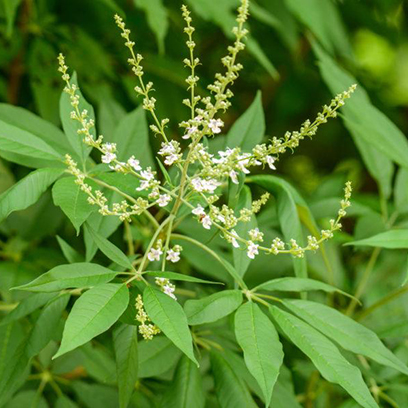
Nirgundi (Vitex negundo)
Discover the health benefits, uses, and medicinal properties of Nirgundi (Vitex negundo).…
-
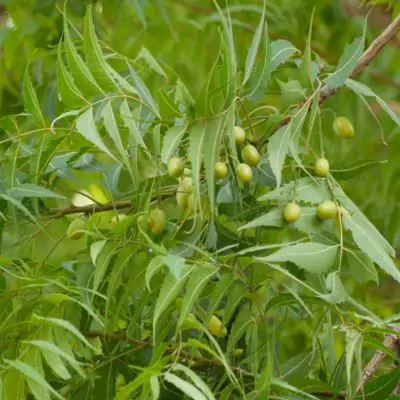
Nimba (Azadirachta indica)
Nimba (Azadirachta indica), known as Neem or Indian Lilac, offers powerful medicinal…

